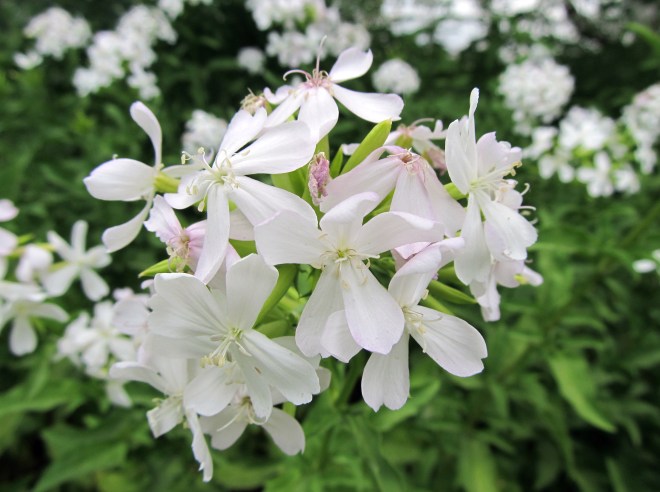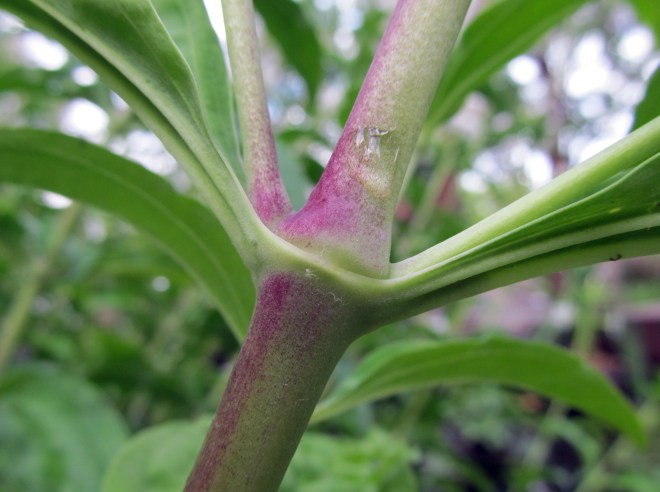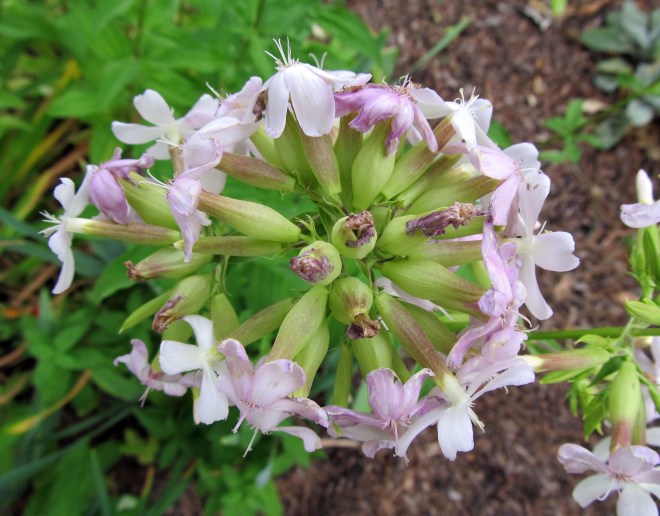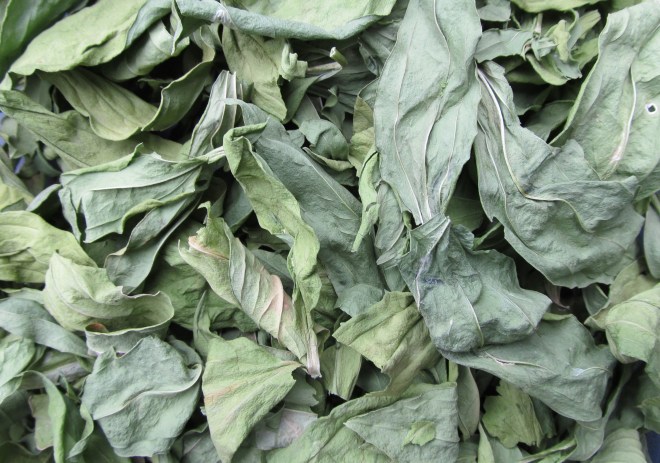Over the past year or so I have written about several edible weeds in an effort to highlight useful weeds. However, weeds don’t have to be edible to be useful. In fact, many weeds are most certainly not edible, but that doesn’t mean they are of no use to humans. Soapwort, for example, is poisonous, and while it does have a history of being used internally as medicine, ingesting it is not advised and should only be done under the direction of a doctor. A much less risky activity would be to make soap out of it.
Saponaria officinalis, commonly known as bouncing bet, hedge pink, fuller’s herb, scourwort, and soapweed or soapwort, is an herbaceous perennial native to Europe. It has been planted widely in flower beds and herb gardens outside of its native range, desired both for its beauty and utility. Capitalizing on our appreciation for it, soapwort has expanded beyond our garden borders and into natural areas, as well as vacant lots, roadsides, and other neglected spaces. Even in a garden setting it can be a bit of a bully, especially if ignored for a season or two.
The stems of soapwort grow to about two feet tall, are unbranched, and sometimes tinged with pink, purple, or red. The leaves are oblong and oppositely-arranged, and their bases form prominent collars around the stems. Showy clusters of flowers are found atop the stems throughout the summer. Like other flowers in the pink family (Caryophyllaceae), they are cigar-shaped at the base and opened wide at the end, showing off 5 distinct petals with notches at their tips. The petals of soapwort flowers bend backwards, with their sex parts protruding outwards. In his description of the flowers, John Eastman remarks in The Book of Field and Roadside that “the reflexed petals surrounding the sexual organs give the impression of flagrant thrust; this is a gaudy, unshy flower.”
The fragrant flowers are pink to white in color. They open in the evening and remain open for a few short days. In an individual flower, pollen matures and is mostly shed before the stigma is ready to accept it. This helps reduce the chance of self-pollination. Cross pollination occurs with the assistance of moths who visit the flowers at night, as well as bees and other flower-visiting insects that come along during the daytime. Soapwort fruits are oval capsules containing as many as 500 kidney-shaped seeds. Seeds aren’t essential to the plants spread though, as much of its colonization occurs via vigorous rhizomes.
In fact, vegetative reproduction is the means by which soapwort forms such expansive, thick patches. It also helps that it’s poisonous. The saponins – its soap making compounds – that it produces in its roots, shoots, and leaves deter most insects and other animals from eating it. It has a reputation for poisoning horses, cows, and other livestock, and so is unwelcome in pastures and rangelands. Saponins are also poisonous to fish, so growing soapwort near fish ponds is not advised.
Soapwort occurs in a variety of soils including sandy, dry, and rocky sites and is surprisingly drough-tolerant, fine qualities to have when colonizing neglected sites. While most other organisms ignore soapwort, it has a friend in humans. Eastman sums this up well: “Soapwort’s most important associate – as is true of most plants we label weeds – is undoubtedly humankind, without whose helpful interventions the plant would surely be much rarer than it is.”
I made a soapy liquid out of soapwort by following a recipe that can be found on various blogs and websites by searching “saponaria soap recipe.” Basically it’s a cup of fresh leaves and stems along with a cup of dried leaves and stems added to a quart of distilled water brought to a boil. After simmering for 15 minutes and then allowing it to cool, strain the mixture through cheese cloth, and it’s ready to go.
This gentle but effective soap can be used for cleaning countertops and other surfaces, as well as dishes, fabrics, and skin. Several sources say it is particularly useful for cleaning delicate fabrics. Sierra and I both found it to have a cooked cabbage or spinach scent to it. This can be masked by adding a few drops of essential oil. Despite its odd aroma, both Sierra and I were impressed by its cleansing power and plan to use it more often.





